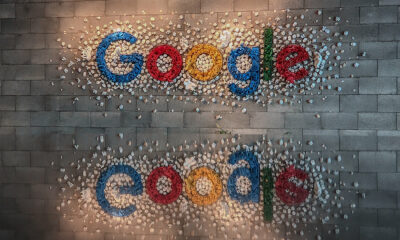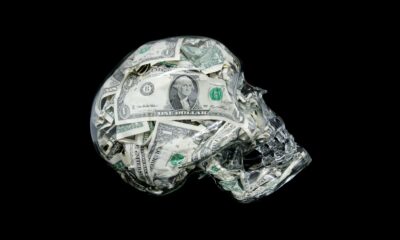SEO
8 Top Enterprise SEO Tools For Content Optimization

I write a lot of columns here at Search Engine Journal about how to optimize your content.
But I rarely touch on how to do this at scale.
Enterprise marketing teams, in particular, often face significant challenges when it comes to content optimization.
For example, optimizing a large catalog of web pages, and the sheer governance factor of managing content across several properties.
Fortunately, plenty of SEO tools offer either enterprise-level features or enterprise-level subscriptions to help optimize content at volume even easier.
Here are a few of my favorite enterprise SEO tools for content and how to use them.
1. Surfer
Surfer is a content optimization platform that uses Artificial Intelligence (AI) to do what many SEO professionals have had to do manually.
What It Is
It assesses the search results and determines how best to optimize content.
This algorithmically-driven tool essentially audits the top URLs for a given keyword and gathers valuable insights regarding what these pieces of content are doing well, plus how to apply these insights to your own content.
Why It’s Great
Surfer is great for enterprises because its Business subscription plan allows up to 140 audits per month, the inclusion of 10 team members, and 70 content editors.
This means that your business can audit up to 150 pages or posts every month and apply updates to up to 70 pieces of content within the Content Editor.
Surfer is super easy to use by internal teams, agency partners, and freelance writers.
So, if you plan on outsourcing your SEO content projects, you can provide a shared link to the Content Editor for whoever is working on your project.
How To Use It
Surfer has many different content optimization tools, so how you use it really depends on your SEO goals.
You can use the Content Planner to plan your content and create an editorial calendar.
You can use the Brief tool to let AI create an optimized SEO page brief.
And you can use the Content Editor to optimize new and existing content.
I recommend using the Audit tool first to assess your content and identify opportunities to optimize existing content.
All you have to do is enter your domain, page, or post URL, and Surfer will produce go-forward recommendations for your SEO content strategy.
2. Ahrefs
Ahrefs is an industry-leading SEO tool best known for its keyword research, competitor analysis, and backlink analysis capabilities.
What It Is
However, it also offers a range of features to serve businesses’ content optimization needs.
For example, Rank Tracker allows businesses to monitor keyword performance and identify opportunities to improve existing content.
And Content Explorer reveals untapped content ideas and opportunities to build valuable backlinks.
Why It’s Great
Ahrefs is a fantastic enterprise-level tool because it offers keyword research, rank tracking, backlink analysis, and content exploration on a global scale.
It boasts having an inventory of over “1.6 billion search queries” and the “most extensive index of backlinks.”
In that, the tool’s goal is to be the “single source of truth” for enterprises looking to make strategic SEO decisions.
How To Use It
As stated above, Ahrefs offers several tools that can aid your content optimization projects.
However, my favorite is Content Explorer, which allows you to research billions of web pages and uncover both SEO and social insights.
Simply enter a topic into the Content Explorer to uncover new opportunities.
Ahrefs even offers a range of filters to refine your search by certain criteria, including the number of referring domains, live versus broken links, language, traffic value, and the number of social shares.
Finally, you can dive deeper into any piece of content to see whether a page is gaining or losing links, or whether traffic has increased or decreased over time.
3. Semrush
Semrush is a popular SEO and content marketing SaaS platform that helps businesses and marketers achieve more with their content.
What It Is
From keyword research to competitor research to social media management, this tool does it all.
It’s really a “one-stop-shop” for your SEO strategy.
Why It’s Great
The Business subscription plan is best suited for large businesses and enterprises because you can research, track, measure, and optimize for a near-limitless number of keywords.
And if you have several websites with hundreds to thousands of pages, ranking for thousand or tens of thousands of keywords you will want a tool that can keep up.
In fact, you can even go bigger with a Custom plan suited to your enterprise’s specific needs.
In summary, Semrush offers over 50 different tools and reports to help you overcome your content marketing challenges.
These tools will help you develop a powerful content strategy and optimize your content to drive more organic traffic.
How To Use It
With so many tools and features in its toolkit, diving deep into all the features is impossible.
Instead, I recommend my two favorite Semrush tools for content optimization: The Content Audit tool and the SEO Writing Assistant (SWA).
Content Audit will assess your website’s content to determine how it performs (in terms of traffic and keyword position) and how users are interacting with your content.
It will then identify which pages are not doing well and then make a recommendation for optimization.
The SWA, on the other hand, is where you put recommendations into action.
It essentially works as a “smart” writing editor that helps you optimize your content in real-time.
This includes updates for SEO and engagement purposes.
4. Screaming Frog
Screaming Frog is a website crawler that helps website owners improve their SEO by extracting data and auditing for common SEO issues.
What It Is
Although mostly known for its technical SEO auditing capabilities, Screaming Frog still has some applications for content optimization.
For example, it will identify duplicate page titles and descriptions that may need optimizing or flag pages with “low content.”
Why It’s Great
Screaming Frog allows users to audit up to 500 URLs for free, but then there’s the option to buy a license to access more advanced features, including “no limit” on URL audits.
For enterprises, this is great because it means you can audit and assess even the largest of websites.
Further, Screaming Frog can audit large sites efficiently while providing results in real-time.
This means you can begin taking action on the SEO recommendations even while the tool crawls the rest of your pages.
How To Use It
If you know your website has more than 500 URLs, I recommend getting started with a paid license right away.
This will allow you to audit your entire site without a URL limit.
Once you’ve downloaded Screaming Frog and validated your license, you can crawl your website.
Watch as the tool propagates with data, such as the number of page URLs, image file sizes, technical blockers, and more.
For content optimization purposes, pay attention to these results:
- Low content pages.
- Missing meta descriptions.
- Duplicate meta descriptions.
- Missing title tags.
- Duplicate title tags.
- Missing H1 headings.
- Duplicate H1 headings.
- Broken internal links.
- Broken external links.
- Missing H2 headings.
- Duplicate content.
- Missing image alt text.
- Missing structured data.
- Pagespeed (entire report).
- Orphan pages.
The existence of any of these issues means your content requires some optimization.
Keep in mind there may be site-wide issues that are forcing these errors, so assess your website holistically so you can apply bulk updates as needed.
5. SparkToro
Founded by Rand Fishkin, SparkToro is an audience research tool that helps businesses create better, user-focused content.
And you can’t get great content without writing with your target audience in mind.
What It Is
Simply put, SparkToro looks at the websites your customers visit, the social accounts they follow, the hashtags they use, and more, to help you create content that appeals to their interests and behavior.
The goal is to “forget audience surveys” and let AI produce accurate and helpful audience insights in just a few clicks.
Why It’s Great
While the Agency subscription package is veered toward marketing agencies, the same tools can also benefit enterprises.
This pricing option offers unlimited searches, up to 250 social media results, demographic data, and up to 50 users for your team.
Spark Toro is great for all larger businesses because it can scan millions of social and web results to find your audience’s interests.
This data can then inform the type of content you create, the search terms you target, the platforms you market your content on, and how to optimize your content to encourage users to take action.
How To Use It
SparkToro offers a convenient How it works video to walk you through its features.
You can use SparkToro to:
- Generate a list of publications your audience loves.
- Compare the sources of influence for multiple audiences.
- Prioritize your PR, social, content, and outreach campaigns.
- Analyze your brand’s online presence.
- Analyze your competitors’ audiences.
- Discover opportunities for backlinks or media coverage.
All in all, use SparkToro to discover where your target customers hang out and the content they engage with most.
Then, use this intel to improve your own content, find new content ideas, and improve conversions on your website.
6. Clearscope
Clearscope is a content optimization platform that helps brands create highly relevant content.
What It Is
Clearscope uses AI technology to uncover what people are searching for, what content is performing best for these searches, and how brands might improve their content to rise to the top of the search results.
Determine your “Content Grade” to assess the SEO of your existing content or improve the score on your new content while it’s in production.
Clearscope offers a helpful tool for enterprises looking to optimize their content at a larger scale.
Why It’s Great
Clearscope is similar to Surfer in that it mainly works as a writing assistant but brings the added benefit of integration.
Clearscope integrates with many of the tools businesses already use, such as Google Docs and WordPress. This makes for seamless adoption without cumbersome back-and-forth between tools.
Further, Clearscope is trusted by big brands. Some of its existing customers include YouTube, Deloitte, Adobe, and Shopify.
These are all massive companies with large appetites for content.
How To Use It
Use the Keyword search to analyze the results for your target keyword and then generate a content editor document where you can either paste in existing content or start from scratch. Clearscope will then offer recommendations based on organic search data, including recommended word count, secondary keywords, headings, and keyword usage.
Also helpful, Clearscope offers a Readability score to determine the reading level for your content. This will help you adjust your content to suit a beginner- to expert-level audience.
7. Frase
Frase.io (otherwise known as “Frase”) is AI research and writing software that helps you “research, write, and optimize high-quality SEO content.”
What It Is
Frase’s claim to fame is assisting brands to streamline the content production process – by reducing the time from hours to mere minutes.
Some of its most notable features include:
- Content Briefs – Allowing users to create SEO content briefs quickly
- Content Writing – Recommendations for generating quality, high-converting content
- Content Optimization – A comparison of your content with top search competitors
- Content Analytics – Exploration into new content opportunities and recommendations for refreshing old content
Why It’s Great
Frase’s Team plan offers a subscription option for enterprises looking to “scale content production.” This includes unlimited document credits, unlimited document sharing, and three user seats, though more are available at an additional cost.
With this model, enterprises can create dozens to hundreds of content briefs. These can then be handed off to writers to write and optimize the content. This reduces the need for an SEO strategist to optimize each piece of content, or to create an entire brief from scratch.
Want to create a ton of valuable content for your enterprise? Then you’ll want a tool that can facilitate this at high volume.
How To Use It
Enter the search term you wish to target and Frase will create a content doc. You can then share this doc with your team, agency, or writer. The writer can produce the content in accordance with Frase’s SEO recommendations.
Further, you can use Frase to find new content ideas. Stumped on which new pages or posts to produce for your brand? Frase can help you fill out your editorial calendar with creative, search-driven content topics.
8. Hemingway Editor
Your content can be chocked full of keywords, but if it isn’t written with your audience in mind, it probably won’t convert. The Hemingway Editor helps you avoid the common blunder.
What It Is
Once your content is optimized for search engines, the Hemingway Editor can be the final pass to ensure your content is bold and clear. This includes editing for voice, complexity, grammar, and overall readability.
Why It’s Great
Hemingway Editor is so simple to use that anyone (a marketer, team member, or writer) can use it to optimize content.
So, even at an enterprise level, it only takes Hemingway Editor a couple of seconds to work its magic.
If you are working with a writing team, have them run their content through Hemingway Editor to identify spelling errors, passive voice, and more. This will save you time (and money) compared to relying on an editor for these updates.
How To Use It
The Hemingway Editor uses color-coding to identify issues in your content. For example:
- “The app highlights lengthy, complex sentences and common errors; if you see a yellow sentence, shorten or split it.”
- To improve readability, “you can utilize a shorter word in place of a purple one.”
- “Adverbs and weakening phrases appear in blue. Get rid of them and pick words with force”.
- “Phrases in green have been marked to show passive voice.”
You can paste in existing content and edit away, or click the “Write” button to start something new.
This app is super simple, helpful, and great for optimizing enterprise-level content.
We Love Our Enterprise SEO Tools
Enterprises have big goals for SEO and even bigger appetites for content. The need for content optimization can seem unending.
That’s why enterprise-level SEO tools are a godsend for updating content on a massive scale.
Working on an existing project? Paste your content into a content writing tool to make improvements in real-time.
Looking for optimization tips? Use Semrush to audit and optimize your content fast.
We love enterprise SEO tools because they make even the largest tasks achievable.
So, even if you have a large site to optimize, these tools can do all the heavy lifting you need to achieve your goals.
More resources:
Featured Image: Ribkhan/Shutterstock
SEO
Google Rolls Out New ‘Web’ Filter For Search Results

Google is introducing a filter that allows you to view only text-based webpages in search results.
The “Web” filter, rolling out globally over the next two days, addresses demand from searchers who prefer a stripped-down, simplified view of search results.
Danny Sullivan, Google’s Search Liaison, states in an announcement:
“We’ve added this after hearing from some that there are times when they’d prefer to just see links to web pages in their search results, such as if they’re looking for longer-form text documents, using a device with limited internet access, or those who just prefer text-based results shown separately from search features.”
We’ve added this after hearing from some that there are times when they’d prefer to just see links to web pages in their search results, such as if they’re looking for longer-form text documents, using a device with limited internet access, or those who just prefer text-based…
— Google SearchLiaison (@searchliaison) May 14, 2024
The new functionality is a throwback to when search results were more straightforward. Now, they often combine rich media like images, videos, and shopping ads alongside the traditional list of web links.
How It Works
On mobile devices, the “Web” filter will be displayed alongside other filter options like “Images” and “News.”
If Google’s systems don’t automatically surface it based on the search query, desktop users may need to select “More” to access it.
 Screenshot from: twitter.com/GoogleSearchLiaison, May 2024.
Screenshot from: twitter.com/GoogleSearchLiaison, May 2024.More About Google Search Filters
Google’s search filters allow you to narrow results by type. The options displayed are dynamically generated based on your search query and what Google’s systems determine could be most relevant.
The “All Filters” option provides access to filters that are not shown automatically.
Alongside filters, Google also displays “Topics” – suggested related terms that can further refine or expand a user’s original query into new areas of exploration.
For more about Google’s search filters, see its official help page.
Featured Image: egaranugrah/Shutterstock
SEO
Why Google Can’t Tell You About Every Ranking Drop

In a recent Twitter exchange, Google’s Search Liaison, Danny Sullivan, provided insight into how the search engine handles algorithmic spam actions and ranking drops.
The discussion was sparked by a website owner’s complaint about a significant traffic loss and the inability to request a manual review.
Sullivan clarified that a site could be affected by an algorithmic spam action or simply not ranking well due to other factors.
He emphasized that many sites experiencing ranking drops mistakenly attribute it to an algorithmic spam action when that may not be the case.
“I’ve looked at many sites where people have complained about losing rankings and decide they have a algorithmic spam action against them, but they don’t. “
Sullivan’s full statement will help you understand Google’s transparency challenges.
Additionally, he explains why the desire for manual review to override automated rankings may be misguided.
Two different things. A site could have an algorithmic spam action. A site could be not ranking well because other systems that *are not about spam* just don’t see it as helpful.
I’ve looked at many sites where people have complained about losing rankings and decide they have a…
— Google SearchLiaison (@searchliaison) May 13, 2024
Challenges In Transparency & Manual Intervention
Sullivan acknowledged the idea of providing more transparency in Search Console, potentially notifying site owners of algorithmic actions similar to manual actions.
However, he highlighted two key challenges:
- Revealing algorithmic spam indicators could allow bad actors to game the system.
- Algorithmic actions are not site-specific and cannot be manually lifted.
Sullivan expressed sympathy for the frustration of not knowing the cause of a traffic drop and the inability to communicate with someone about it.
However, he cautioned against the desire for a manual intervention to override the automated systems’ rankings.
Sullivan states:
“…you don’t really want to think “Oh, I just wish I had a manual action, that would be so much easier.” You really don’t want your individual site coming the attention of our spam analysts. First, it’s not like manual actions are somehow instantly processed. Second, it’s just something we know about a site going forward, especially if it says it has change but hasn’t really.”
Determining Content Helpfulness & Reliability
Moving beyond spam, Sullivan discussed various systems that assess the helpfulness, usefulness, and reliability of individual content and sites.
He acknowledged that these systems are imperfect and some high-quality sites may not be recognized as well as they should be.
“Some of them ranking really well. But they’ve moved down a bit in small positions enough that the traffic drop is notable. They assume they have fundamental issues but don’t, really — which is why we added a whole section about this to our debugging traffic drops page.”
Sullivan revealed ongoing discussions about providing more indicators in Search Console to help creators understand their content’s performance.
“Another thing I’ve been discussing, and I’m not alone in this, is could we do more in Search Console to show some of these indicators. This is all challenging similar to all the stuff I said about spam, about how not wanting to let the systems get gamed, and also how there’s then no button we would push that’s like “actually more useful than our automated systems think — rank it better!” But maybe there’s a way we can find to share more, in a way that helps everyone and coupled with better guidance, would help creators.”
Advocacy For Small Publishers & Positive Progress
In response to a suggestion from Brandon Saltalamacchia, founder of RetroDodo, about manually reviewing “good” sites and providing guidance, Sullivan shared his thoughts on potential solutions.
He mentioned exploring ideas such as self-declaration through structured data for small publishers and learning from that information to make positive changes.
“I have some thoughts I’ve been exploring and proposing on what we might do with small publishers and self-declaring with structured data and how we might learn from that and use that in various ways. Which is getting way ahead of myself and the usual no promises but yes, I think and hope for ways to move ahead more positively.”
Sullivan said he can’t make promises or implement changes overnight, but he expressed hope for finding ways to move forward positively.
Featured Image: Tero Vesalainen/Shutterstock
SEO
56 Google Search Statistics to Bookmark for 2024

If you’re curious about the state of Google search in 2024, look no further.
Each year we pick, vet, and categorize a list of up-to-date statistics to give you insights from trusted sources on Google search trends.
- Google has a web index of “about 400 billion documents”. (The Capitol Forum)
- Google’s search index is over 100 million gigabytes in size. (Google)
- There are an estimated 3.5 billion searches on Google each day. (Internet Live Stats)
- 61.5% of desktop searches and 34.4% of mobile searches result in no clicks. (SparkToro)
- 15% of all Google searches have never been searched before. (Google)
- 94.74% of keywords get 10 monthly searches or fewer. (Ahrefs)
- The most searched keyword in the US and globally is “YouTube,” and youtube.com gets the most traffic from Google. (Ahrefs)
- 96.55% of all pages get zero search traffic from Google. (Ahrefs)
- 50-65% of all number-one spots are dominated by featured snippets. (Authority Hacker)
- Reddit is the most popular domain for product review queries. (Detailed)
- Google is the most used search engine in the world, with a mobile market share of 95.32% and a desktop market share of 81.95%. (Statista)


- Google.com generated 84.2 billion visits a month in 2023. (Statista)
- Google generated $307.4 billion in revenue in 2023. (Alphabet Investor Relations)
- 63.41% of all US web traffic referrals come from Google. (SparkToro)
- 92.96% of global traffic comes from Google Search, Google Images, and Google Maps. (SparkToro)
- Only 49% of Gen Z women use Google as their search engine. The rest use TikTok. (Search Engine Land)
- 58.67% of all website traffic worldwide comes from mobile phones. (Statista)
- 57% of local search queries are submitted using a mobile device or tablet. (ReviewTrackers)


- 51% of smartphone users have discovered a new company or product when conducting a search on their smartphones. (Think With Google)
- 54% of smartphone users search for business hours, and 53% search for directions to local stores. (Think With Google)
- 18% of local searches on smartphones lead to a purchase within a day vs. 7% of non-local searches. (Think With Google)
- 56% of in-store shoppers used their smartphones to shop or research items while they were in-store. (Think With Google)
- 60% of smartphone users have contacted a business directly using the search results (e.g., “click to call” option). (Think With Google)
- 63.6% of consumers say they are likely to check reviews on Google before visiting a business location. (ReviewTrackers)
- 88% of consumers would use a business that replies to all of its reviews. (BrightLocal)
- Customers are 2.7 times more likely to consider a business reputable if they find a complete Business Profile on Google Search and Maps. (Google)
- Customers are 70% more likely to visit and 50% more likely to consider purchasing from businesses with a complete Business Profile. (Google)
- 76% of people who search on their smartphones for something nearby visit a business within a day. (Think With Google)
- 28% of searches for something nearby result in a purchase. (Think With Google)
- Mobile searches for “store open near me” (such as, “grocery store open near me” have grown by over 250% in the last two years. (Think With Google)
- People use Google Lens for 12 billion visual searches a month. (Google)
- 50% of online shoppers say images helped them decide what to buy. (Think With Google)
- There are an estimated 136 billion indexed images on Google Image Search. (Photutorial)
- 15.8% of Google SERPs show images. (Moz)
- People click on 3D images almost 50% more than static ones. (Google)
- More than 800 million people use Google Discover monthly to stay updated on their interests. (Google)
- 46% of Google Discover URLs are news sites, 44% e-commerce, 7% entertainment, and 2% travel. (Search Engine Journal)
- Even though news sites accounted for under 50% of Google Discover URLs, they received 99% of Discover clicks. (Search Engine Journal)


- Most Google Discover URLs only receive traffic for three to four days, with most of that traffic occurring one to two days after publishing. (Search Engine Journal)
- The clickthrough rate (CTR) for Google Discover is 11%. (Search Engine Journal)
- 91.45% of search volumes in Google Ads Keyword Planner are overestimates. (Ahrefs)
- For every $1 a business spends on Google Ads, they receive $8 in profit through Google Search and Ads. (Google)
- Google removed 5.5 billion ads, suspended 12.7 million advertiser accounts, restricted over 6.9 billion ads, and restricted ads from showing up on 2.1 billion publisher pages in 2023. (Google)
- The average shopping click-through rate (CTR) across all industries is 0.86% for Google Ads. (Wordstream)
- The average shopping cost per click (CPC) across all industries is $0.66 for Google Ads. (Wordstream)
- The average shopping conversion rate (CVR) across all industries is 1.91% for Google Ads. (Wordstream)
- 58% of consumers ages 25-34 use voice search daily. (UpCity)
- 16% of people use voice search for local “near me” searches. (UpCity)
- 67% of consumers say they’re very likely to use voice search when seeking information. (UpCity)
- Active users of the Google Assistant grew 4X over the past year, as of 2019. (Think With Google)
- Google Assistant hit 1 billion app installs. (Android Police)
- AI-generated answers from SGE were available for 91% of entertainment queries but only 17% of healthcare queries. (Statista)
- The AI-generated answers in Google’s Search Generative Experience (SGE) do not match any links from the top 10 Google organic search results 93.8% of the time. (Search Engine Journal)
- Google displays a Search Generative element for 86.8% of all search queries. (Authoritas)


- 62% of generative links came from sources outside the top 10 ranking organic domains. Only 20.1% of generative URLs directly match an organic URL ranking on page one. (Authoritas)
- 70% of SEOs said that they were worried about the impact of SGE on organic search (Aira)
Learn more
Check out more resources on how Google works:
-

 PPC6 days ago
PPC6 days agoHow the TikTok Algorithm Works in 2024 (+9 Ways to Go Viral)
-

 SEO5 days ago
SEO5 days agoHow to Use Keywords for SEO: The Complete Beginner’s Guide
-

 MARKETING6 days ago
MARKETING6 days agoHow To Protect Your People and Brand
-

 MARKETING4 days ago
MARKETING4 days agoAdvertising on Hulu: Ad Formats, Examples & Tips
-

 MARKETING5 days ago
MARKETING5 days agoUpdates to data build service for better developer experiences
-

 MARKETING5 days ago
MARKETING5 days agoThe Ultimate Guide to Email Marketing
-

 SEO7 days ago
SEO7 days agoAutomate Multi-Site Reporting With Google Sheets And GSC API
-

 MARKETING22 hours ago
MARKETING22 hours ago18 Events and Conferences for Black Entrepreneurs in 2024














You must be logged in to post a comment Login